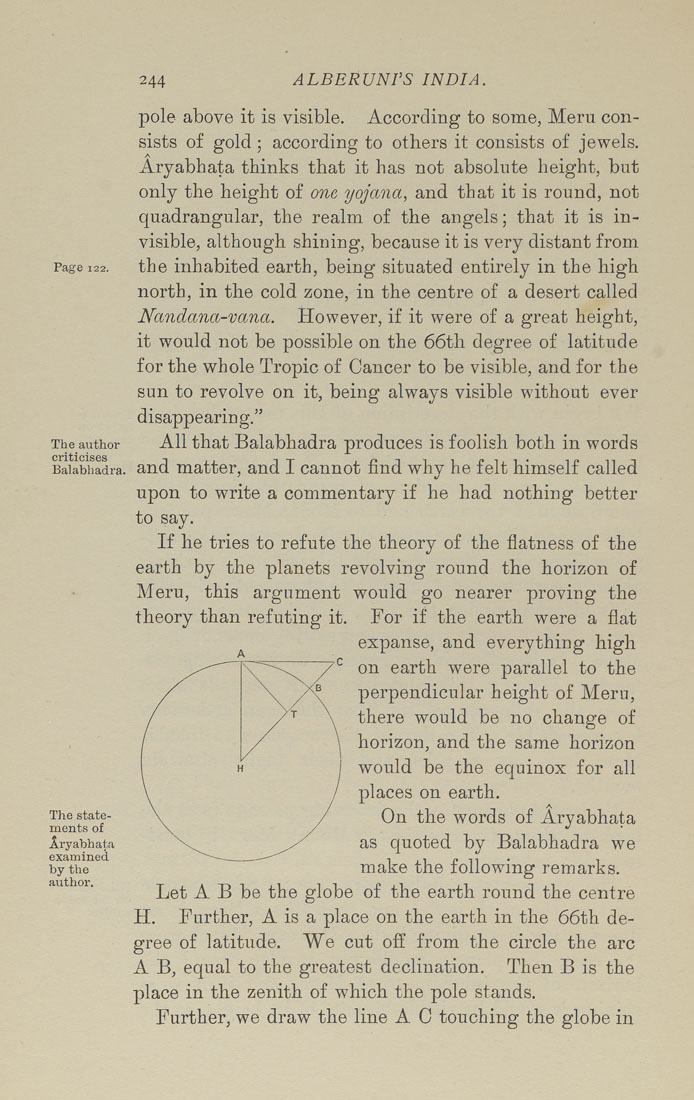Bīrūnī, Muḥammad ibn Aḥmad, Alberuni's India (v. 1)
(London : Kegan Paul, Trench, Trübner & Co., 1910.)
|
||
|
|
|
|
| Page 244 |

244 ALBERUNPS INDIA. Page 122. The author criticises Balabhadra. The state¬ ments of Aryabhata examined by the author. pole above it is visible. According to some, Meru con¬ sists of gold ; according to others it consists of jewels. Aryabhata thinks that it has not absolute height, but only the height of one yojana, and that it is round, not quadrangular, the realm of the angels; that it is in¬ visible, although shining, because it is very distant from the inhabited earth, being situated entirely in the high north, in the cold zone, in the centre of a desert called Nandctna-vana. However, if it were of a great height, it would not be possible on the 66th degree of latitude for the whole Tropic of Cancer to be visible, and for the sun to revolve on it, being always visible without ever disappearing." All that Balabhadra produces is foolish both in words and matter, and I cannot find why he felt himself called upon to write a commentary if he had nothing better to say. If he tries to refute the theory of the flatness of the earth by the planets revolving round the horizon of Meru, this argument would go nearer proving the theory than refuting it. For if the earth were a flat expanse, and everything high on earth were parallel to the perpendicular height of Meru, there would be no change of horizon, and the same horizon would be the equinox for all places on earth. On the words of Aryabhata as quoted by Balabhadra we make the following remarks. Let A B be the globe of the earth round the centre H. Further, A is a place on the earth in the 66th de¬ gree of latitude. We cut off from the circle the arc A B, equal to the greatest declination. Then B is the place in the zenith of which the pole stands. Further, we draw the line A C touching the globe in |
| Page 244 |







